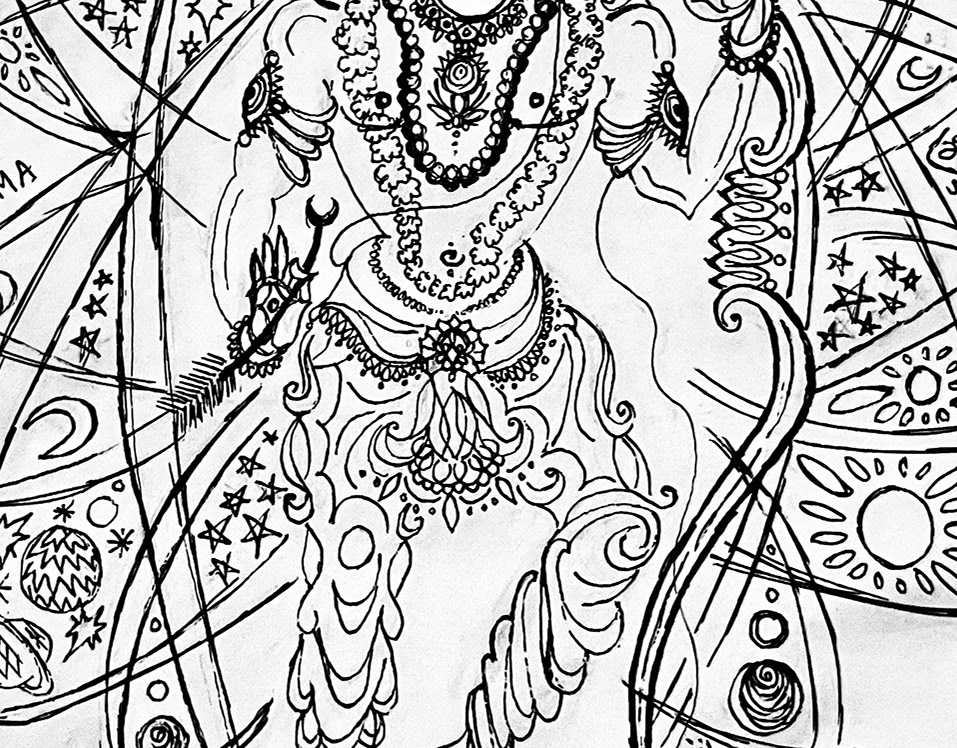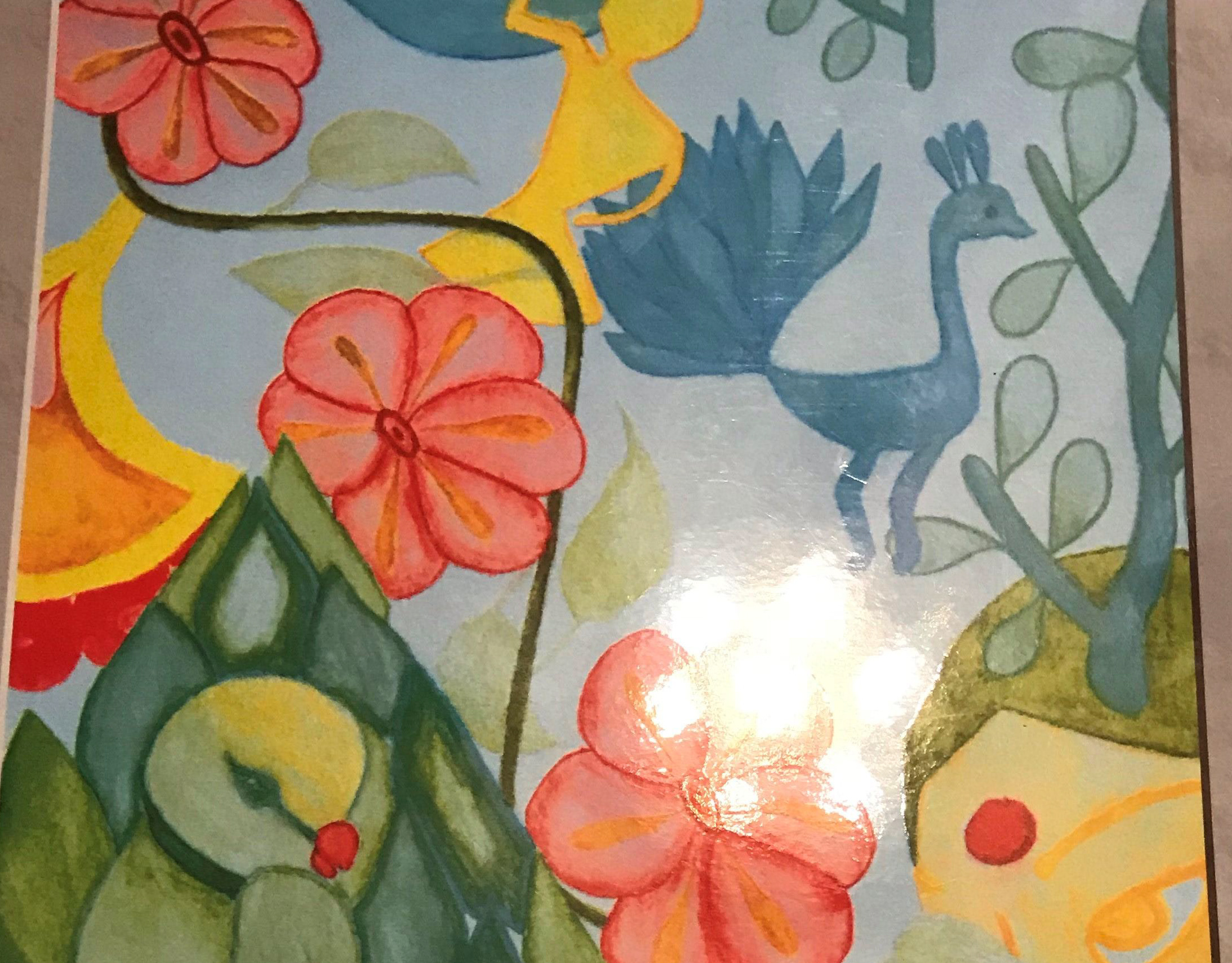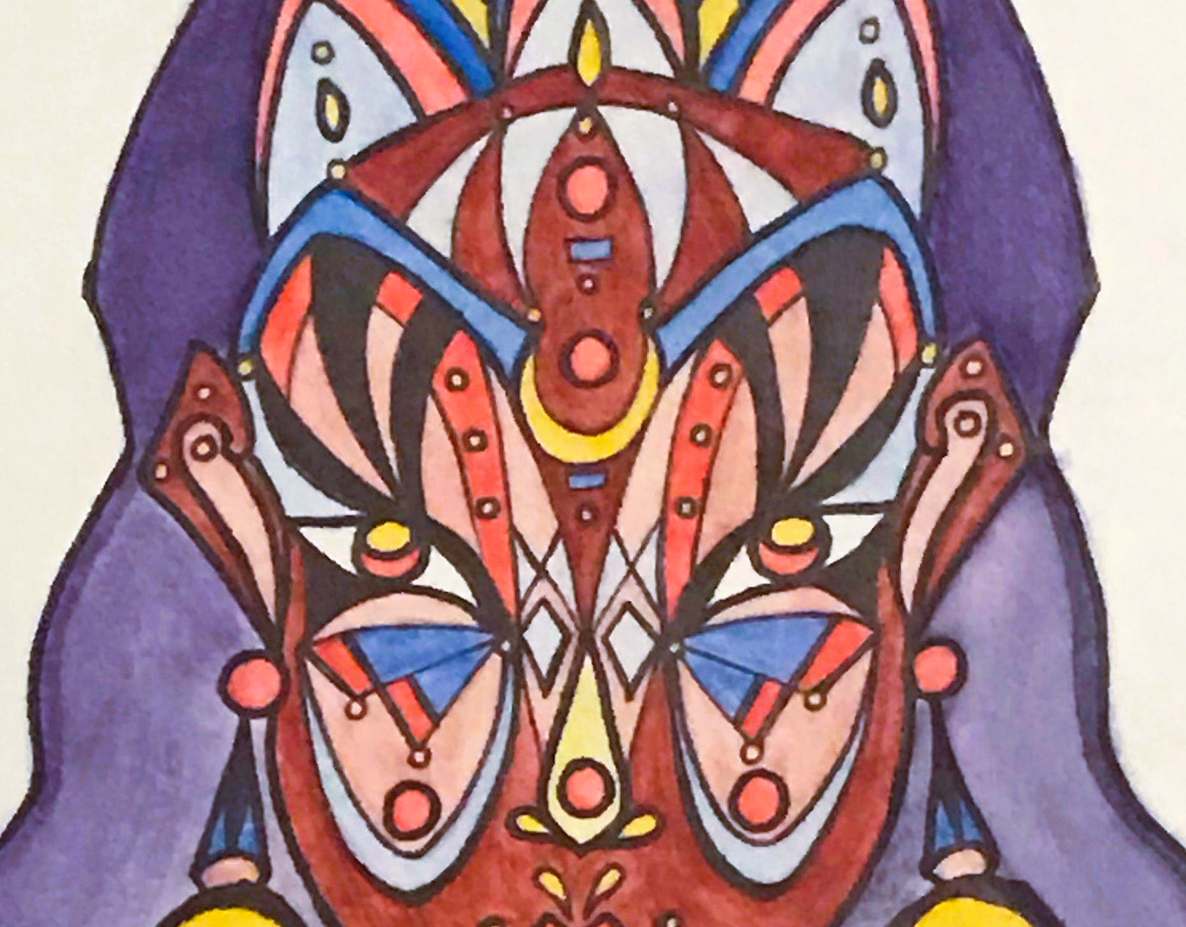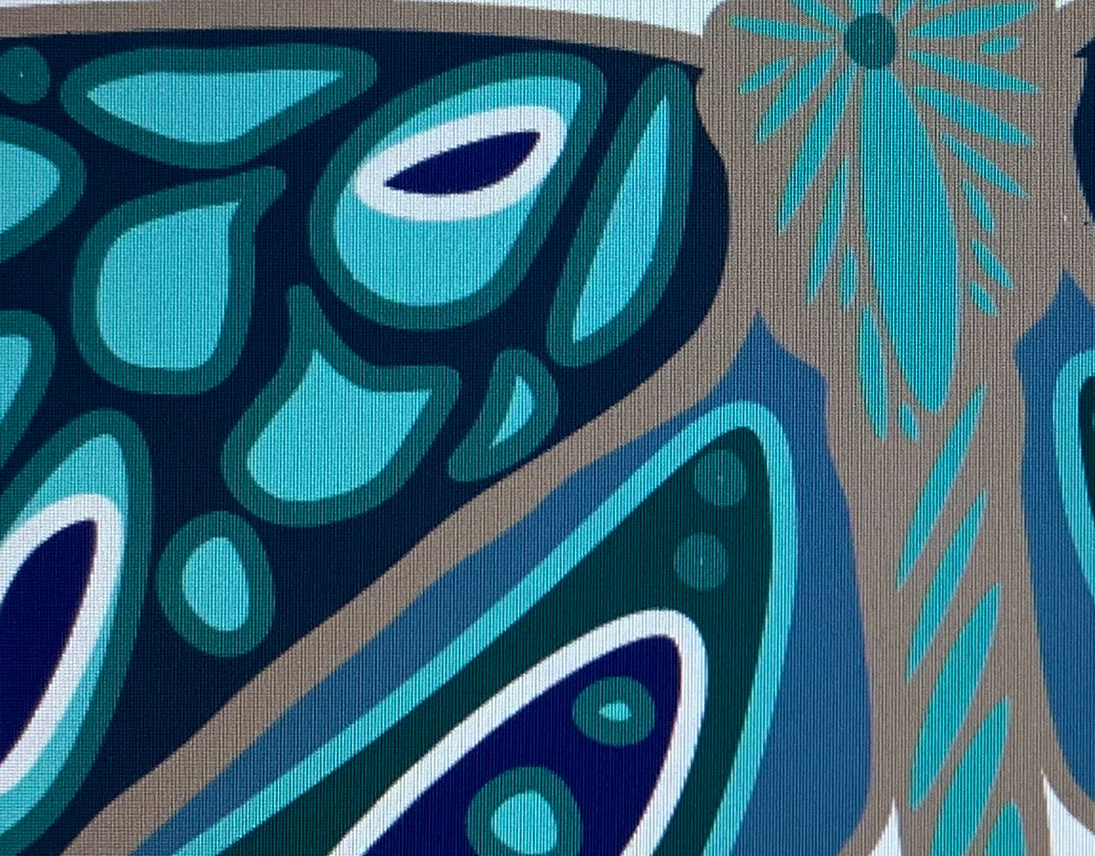"War God: Karthikeya" (2024)
Drawn with ink. This piece depicts the five-headed, ten-armed form of Karthikeya, the Hindu god of war. His vehicle is a peacock which bites a snake, representing the triumph of good over evil. He carries different weapons in his hands, including: a sword, a trident, an arrow, a bow, a shield, and a noose. In his third arm on the right, he carries a rooster, which is his symbol. Each of his foreheads is marked with the symbol of his father, Shiva, and each of his heads are tilted in a different direction. A halo glow fits around in body in a circle. His chest is adorned with jewelry and his pants are drawn stylistically to show their draping. His first and second hands are facing forward to bless the onlooker. This piece is inspired by Raja Ravi Varma, the Indian painter who often chose mythological figures as his subjects. There is intense detailing in the crown and in the hands, as well as the attention to maintaining general symmetry in the arms and heads. The style of the peacock is inspired by Russian Orthodox icons. Note: the number of heads and arms is symbolic for deities in Hinduism, and the artist wanted to challenge herself with this piece, hence the outcome!
More from this Category:









